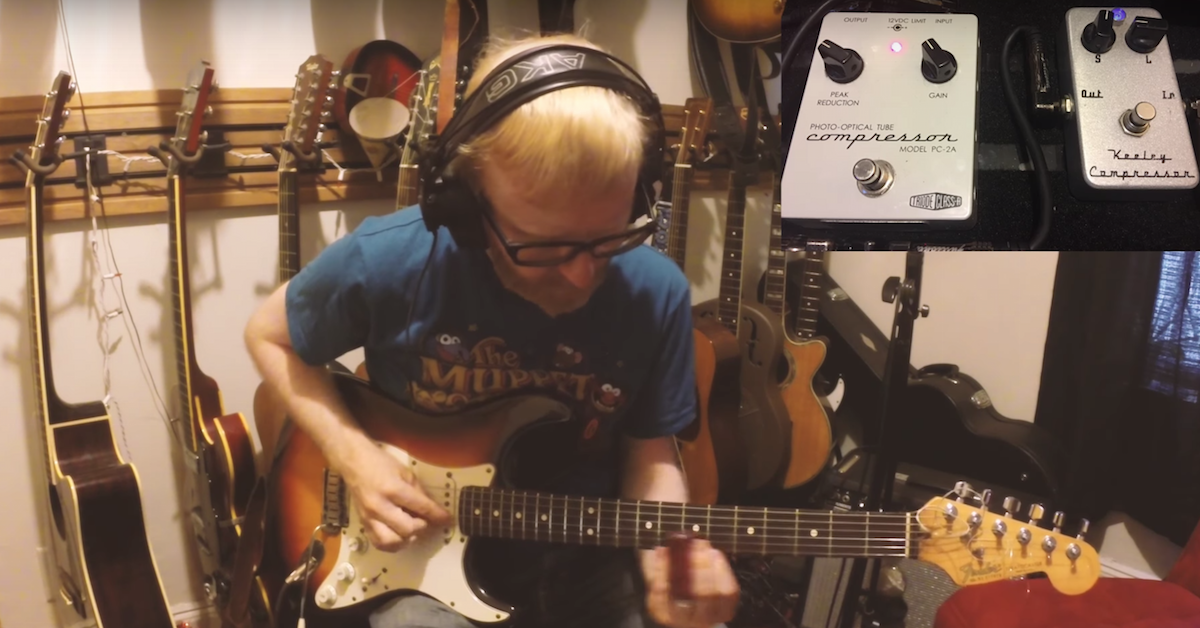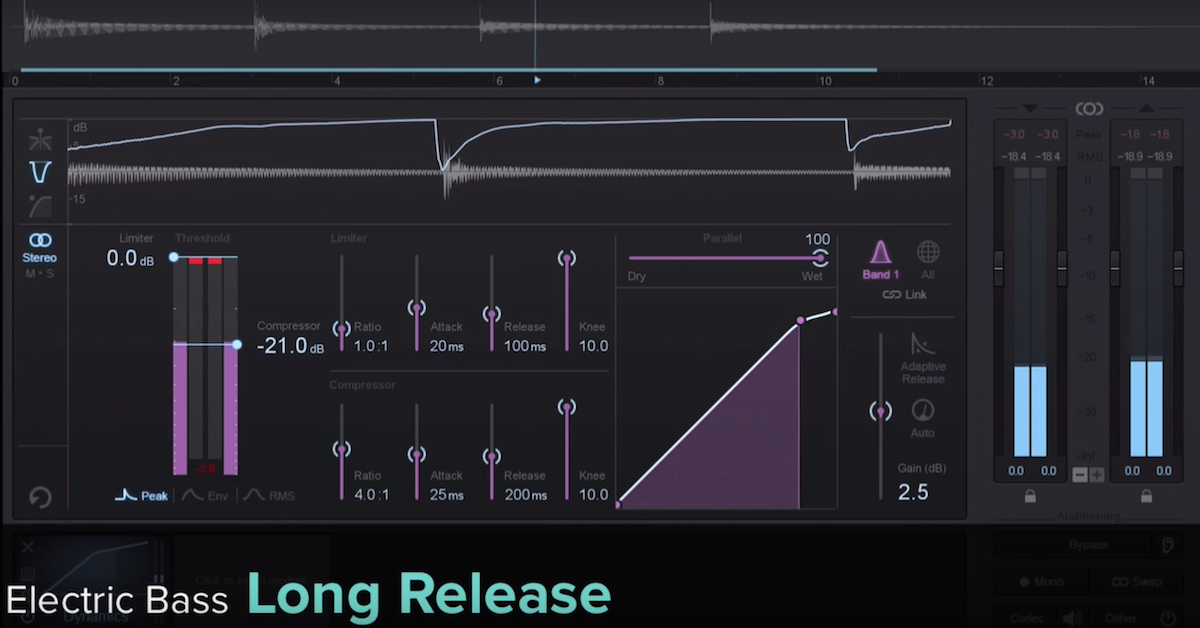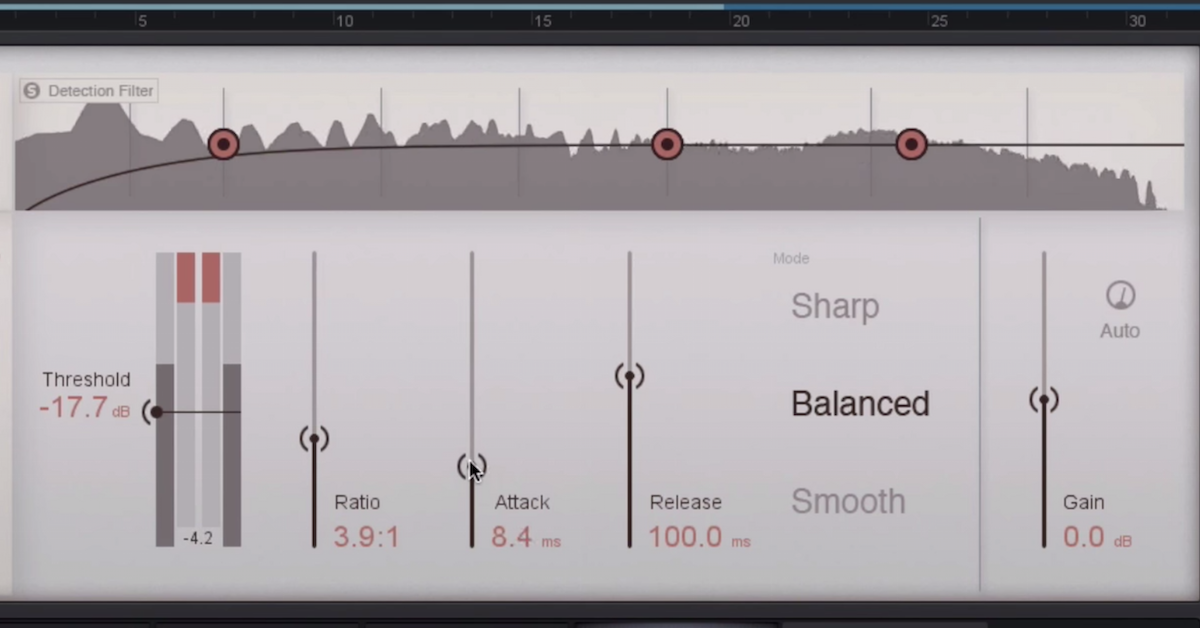Examples of Audio Compression in a Mix
provider: youtube
url: https://www.youtube.com/watch?v=gYuYH_HiWdg&list=PL4dISychPQEtFQZio2N-yki9sd7NdH5_r&index=3
src: https://www.youtube.com/embed/gYuYH_HiWdg?list=PL4dISychPQEtFQZio2N-yki9sd7NdH5_r
src gen: https://www.youtube.com/embed/gYuYH_HiWdg
While this is not meant to be an exhaustive list of parameters, it does cover the main parameters found in fully adjustable hardware and software compressors. It’s a good idea to develop some mastery over the individual parameters, so that you can tailor compression to suit your particular music and taste.
When you work with compressors, you’ll understand that in the end, all of the parameters interact with each other. So no single parameter is more important than the others. An adjustment to one will likely have an effect on the behavior of the others.
Remember, it takes time to learn compression effectively, in part because it takes time to learn to hear the effect of compression well.
I’ll play you a few examples of the sound of compression. I’m going to exaggerate the compression so you can hear it quite obviously. You may not use this much compression typically, this is just for the sake of demonstration.
This first example is a full mix played with no compression, and then played with a lot of compression. Here are some things to listen for: The way the drums are less bright or sharp; the way mid-range instruments are emphasized; you may actually be able to hear or notice the pitch of the notes played and sung more clearly; and you may notice that the pulse and the rhythm of the music seems a little bit less prominent when you listen to the compressed version.
[mix, no compression]
[mix with compression]
[mix, no compression]
[mix with compression]
Now let’s listen to an example of just an electric bass. It’s easier to notice the effect of compression on a single sustained note than listening to a full mix.
In the uncompressed version, the note dies off naturally, but when you listen to the compressed version, you’ll hear that the sustain is exaggerated. The compressor evens out the dynamic contrast between loud and soft.
[bass guitar, no compression]
[bass guitar with compression]
There are as many different examples as there are instruments and performances. Again, it takes time and practice to achieve the amount of compression that suits your music.
The other videos in our series will focus on individual parameters to help you dive deep into understanding and designing compressor settings yourself. Enjoy!





